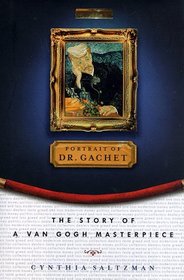Lorelie L. (artgal36) reviewed The Portrait of Dr. Gachet: The Story of a van Gogh Masterpiece on + 471 more book reviews
Helpful Score: 2
Only a few weeks before his 1890 suicide, Vincent van Gogh painted a portrait of Paul-Ferdinand Gachet, a local physician the painter had been fruitlessly consulting about his depression. Upon his death, the painting, like much of van Gogh's work, went to his brother, Theo. A few years later, Theo's widow sold it for 300 francs (worth, then, $58). In 1990, a wealthy Japanese businessman paid $82.5 million at a Christie's auction for it and promptly hid it away in a Tokyo warehouse, where it presumably remains to this day.
Cynthia Saltzman traces the painting's provenance through a century of art collecting and cultural politics. Along the way, the portrait passes through--among others--the hands of early modernist collectors, the Nazi regime (where it was shown as part of an exhibit of "degenerate" art), and New York's Metropolitan Museum of Art. In addition to a detailed account of the circumstances of each change of possession (it slipped out of the Nazis' hands, for example, when Herman Goerring needed a quick transfusion of hard currency), Saltzman provides a sensitive appraisal of the changing critical reputation of van Gogh and of the fluctuating market for "masterpieces" on canvas.
Cynthia Saltzman traces the painting's provenance through a century of art collecting and cultural politics. Along the way, the portrait passes through--among others--the hands of early modernist collectors, the Nazi regime (where it was shown as part of an exhibit of "degenerate" art), and New York's Metropolitan Museum of Art. In addition to a detailed account of the circumstances of each change of possession (it slipped out of the Nazis' hands, for example, when Herman Goerring needed a quick transfusion of hard currency), Saltzman provides a sensitive appraisal of the changing critical reputation of van Gogh and of the fluctuating market for "masterpieces" on canvas.




